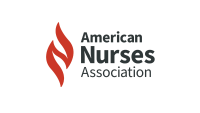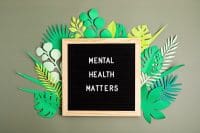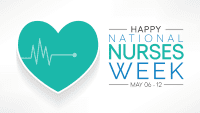As a new staff nurse, I worked mostly nights and went to school during the day to complete my bachelor’s degree. One day I nodded off while driving and came to a stop on the back bumper of the car in front of me, which was stopped at a red light. Although no injuries or damage occurred, it was a true wake-up call. I realized then that getting adequate rest—despite working rotating shifts and trying to maintain a normal life—was critical to my own well-being and that of my patients.
More recently, I reflected on the full meaning of ANA’s mission statement: Nurses advancing our profession to improve health for all. The statement speaks to our collective commitment to the health of patients, families, and the public. But improving health for all also means the health of nurses, many of whom routinely put their own well-being last. At ANA, we’ve developed many programs and resources that support nurses’ quest for better health and safer patient care, which are intertwined.
One of the documents ANA recently released is our position statement on fatigue. This persistent problem has been linked to many ill effects on nurses’ own health, such as cardiovascular disease, diabetes, and GI problems. Further, findings from Keeping Patients Safe: Transforming the Work Environment of Nurses, the 2003 Institute of Medicine Report, pointed out the relationships among staffing levels, fatigue, and patient-related errors.
ANA’s position statement calls for nurses and employers to work collaboratively to address fatigue, and lists a series of practical recommendations to meet that goal. My Virginia Nurses Association colleague, Shirley Gibson, DNP, MSHA, RN, FACHE, associate vice president of nursing at VCU Health System, recently shared two key points about addressing fatigue effectively. First, she said that designing staffing and scheduling practices should be a joint venture, with both employers and nurses having a responsibility to ensure patient care is provided by those who are alert and well rested.
Secondly, Gibson said, “As part of any policy on nurse fatigue, there must be methods—also developed collaboratively—that monitor compliance for the safety of patients and the well-being of registered nurses.” These methods should guard against nurses working excessive hours in a day or a week, either voluntarily or by request. To further help nurses and employers manage fatigue, ANA is offering continuing education activities, which include “Your Mind and Body on Fatigue,” and a webinar, “Fighting Fatigue: Improving Health for You and Your Patient.” The latter addresses evidence-based scheduling strategies.
Turning to another issue that affects nurses’ well-being, an ANA professional issues panel is examining ways to eliminate violence and drive out incivility in the workplace. The panel will share draft documents for public comment in April on ANA’s website, so please take a few minutes to provide your insights.
In yet another initiative, ANA offers nurses and nursing students the opportunity to take the HealthyNurse™ Health Risk Appraisal throughout 2015, which identifies professional and personal risks. I urge you to take advantage of this tool at http://nursingworld.org/HRA-Executive-Summary. While anonymous, it allows ANA to assess the state of nurses’ health and develop more resources to promote healthy behaviors and create healthier work environments.
Finally, ANA released the revised Code of Ethics for Nurses with Interpretive Statements. According to nurse ethicist Cynda Rushton, PhD, RN, FAAN, my colleague from the Maryland Nurses Association, “Nurses have an ethical mandate to care for themselves so they can care for others.” This mandate, contained in provision 5 of the Code, speaks to nurses’ ethical right to advocate for practices that keep themselves and their patients safe—an issue that is ever present and relevant to current discussions on nurse fatigue.
To learn more about these ANA initiatives, go to www.nursingworld.org. This year, let’s all work together to improve “health for all.” You deserve to be healthy, too.
Pamela F. Cipriano, PhD, RN, NEA-BC, FAAN
President, American Nurses Association



















